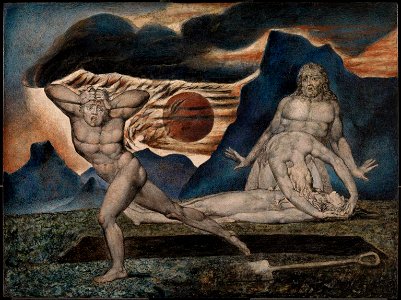The body of abel found by adam and eve by william blake c1826 tate artwork details
artist: william blake (1757‑1827)
title
the body of abel found by adam and eve
datec. 1826
mediumink, tempera and gold on mahogany
dimensionssupport: 325 x 433 mm frame: 367 x 473 x 44 mm
collection
tate
acquisitionbequeathed by w. Graham robertson 1949
reference
n05888
display caption
this work shows adam and eve discovering their dead son. His brother cain, the murderer, flees the scene. Despite his evil deed, cain, appears as an ideal male figure. Here, blake’s approach is in line with that of lavater, who argued that someone’s appearance is often ‘better than his actions’. However lavater also suggested that in performing an evil act the person could become disfigured, perhaps explaining cain’s contorted body. Rather than follow lavater here, blake’s use of the body to invoke self-loathing, fear and, in the case of eve, despair may be closer to pathognomy - a way of reading emotions about which lavater remained sceptical. Object Type: painting.
Loading...
